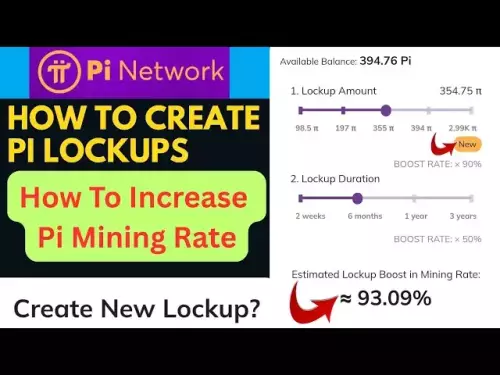-
 bitcoin
bitcoin $114779.865156 USD
2.30% -
 ethereum
ethereum $4226.519789 USD
2.39% -
 tether
tether $1.000545 USD
0.04% -
 xrp
xrp $2.890223 USD
0.92% -
 bnb
bnb $1030.029301 USD
2.95% -
 solana
solana $212.824944 USD
1.69% -
 usd-coin
usd-coin $0.999757 USD
0.01% -
 dogecoin
dogecoin $0.234961 USD
-0.27% -
 tron
tron $0.337174 USD
0.42% -
 cardano
cardano $0.804783 USD
0.09% -
 hyperliquid
hyperliquid $45.748770 USD
-2.85% -
 chainlink
chainlink $21.699170 USD
0.82% -
 ethena-usde
ethena-usde $1.001452 USD
0.08% -
 avalanche
avalanche $30.237800 USD
1.14% -
 stellar
stellar $0.372604 USD
1.52%
What is cross-chain technology in DeFi and how does it solve interoperability issues?
Cross-chain technology tackles DeFi's interoperability problem by enabling asset transfers and data sharing across different blockchains, boosting efficiency despite security and scalability challenges inherent in various approaches like bridges and atomic swaps.
Mar 18, 2025 at 07:36 am
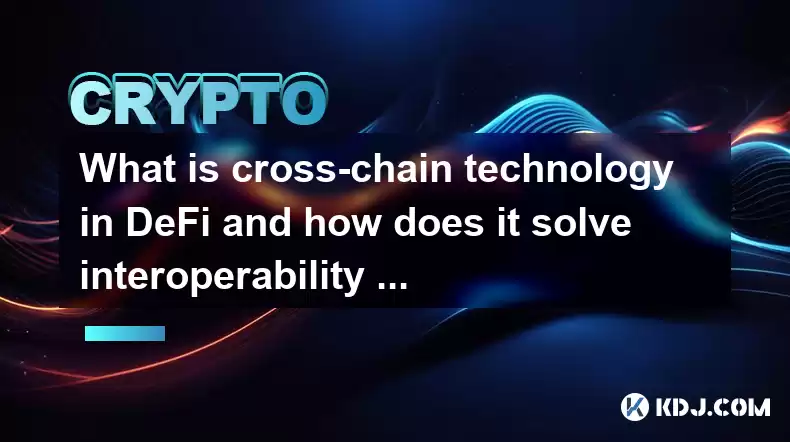
- Cross-chain technology bridges the gap between different blockchains, allowing for the transfer of assets and data across networks.
- Interoperability is a major challenge in DeFi, as different platforms often operate in silos.
- Several approaches exist to achieve cross-chain communication, each with its own strengths and weaknesses.
- Security and scalability are critical considerations in cross-chain design.
Decentralized Finance (DeFi) has exploded in popularity, offering innovative financial services without intermediaries. However, a significant hurdle remains: interoperability. Different DeFi platforms often operate on separate blockchains, limiting the seamless flow of assets and information. This is where cross-chain technology steps in. It aims to connect disparate blockchains, enabling communication and asset transfer between them. This unlocks a new level of efficiency and functionality within the DeFi ecosystem.
The lack of interoperability significantly hampers the growth of DeFi. Imagine trying to use assets locked in one DeFi protocol on another – it's often impossible without complex and costly workarounds. Cross-chain technology aims to eliminate this friction, allowing users to leverage the unique features of different platforms without being constrained by their individual blockchain environments. This opens up new possibilities for sophisticated DeFi strategies and applications.
Several approaches exist to achieve cross-chain interoperability. One common method involves using bridges. These are essentially intermediaries that facilitate the transfer of tokens between blockchains. A bridge might lock tokens on one chain and mint equivalent tokens on another, allowing users to move their assets. However, bridges often introduce a degree of centralization, raising security concerns.
Another approach involves using atomic swaps. These are peer-to-peer transactions where the exchange of assets is atomic – meaning it either completes fully or not at all. This eliminates the need for a central intermediary, enhancing security. However, atomic swaps are not always feasible due to the technical complexities involved and limitations across different blockchain designs.
Furthermore, protocols utilizing a layer-0 approach aim to create a unified blockchain infrastructure. These aim to facilitate cross-chain communication through a shared underlying layer, reducing complexities. This often involves a complex architecture and may require substantial development and adoption efforts.
Security is paramount in cross-chain technology. A poorly designed bridge or atomic swap protocol can become a target for hackers, potentially resulting in significant losses of funds. Robust security measures, including thorough audits and advanced cryptographic techniques, are crucial to mitigate these risks. Scalability is also a key concern. As the number of cross-chain transactions increases, the underlying infrastructure must be able to handle the increased load without compromising performance.
Implementing cross-chain solutions can be technically challenging. Each blockchain has its own unique architecture and consensus mechanism, making it difficult to establish seamless communication. Developers must carefully consider the specific requirements of each blockchain and design their cross-chain protocols accordingly. Furthermore, the complexity of these systems can make them difficult to audit and verify, adding to the security challenges.
The choice of which cross-chain technology to utilize depends on several factors, including the specific blockchains involved, the type of assets being transferred, and the desired level of security and scalability. There is no one-size-fits-all solution, and the landscape is constantly evolving as new technologies emerge. This means careful consideration is needed to determine the best approach for any given use case.
The development of cross-chain technology is an ongoing process, with researchers and developers constantly exploring new approaches and improving existing ones. The ultimate goal is to create a truly interoperable DeFi ecosystem, where users can seamlessly access and utilize assets and services across multiple blockchains. This will significantly expand the possibilities of DeFi and unlock its full potential.
Common Questions and Answers:Q: What are the risks associated with cross-chain technology?A: The primary risks include security vulnerabilities in bridges (centralized points of failure), smart contract bugs leading to asset loss, and the potential for exploits targeting the cross-chain communication protocols themselves. Scalability limitations can also affect transaction speed and costs.
Q: How does cross-chain technology improve DeFi's scalability?A: While cross-chain technology doesn't directly improve the scalability of individual blockchains, it can indirectly improve overall DeFi scalability by allowing users to access different networks with varying capabilities, potentially relieving congestion on a single, highly utilized chain.
Q: What are some examples of cross-chain protocols?A: Examples include Chainlink's Cross-Chain Interoperability Protocol (CCIP), Cosmos IBC, Polkadot's relay chain, and various bridge protocols like Wormhole and RenBridge. Each employs different mechanisms to achieve interoperability.
Q: Is cross-chain technology truly decentralized?A: The level of decentralization varies significantly depending on the specific implementation. Some solutions, like bridges, introduce a degree of centralization, while others, like atomic swaps, are inherently more decentralized.
Q: What is the future of cross-chain technology in DeFi?A: The future likely involves more sophisticated and secure cross-chain protocols, possibly incorporating advancements in zero-knowledge proofs and other cryptographic techniques to improve efficiency and security while reducing the reliance on centralized components. A more unified and seamless cross-chain experience is the long-term goal.
Disclaimer:info@kdj.com
The information provided is not trading advice. kdj.com does not assume any responsibility for any investments made based on the information provided in this article. Cryptocurrencies are highly volatile and it is highly recommended that you invest with caution after thorough research!
If you believe that the content used on this website infringes your copyright, please contact us immediately (info@kdj.com) and we will delete it promptly.
- Government Shutdown, Trump Meeting, Deadlock: A New Yorker's Crypto Take
- 2025-09-30 10:45:12
- Token Securities, Stablecoins, and Synergy: A New Standard for Digital Finance in NYC
- 2025-09-30 10:25:15
- Dogecoin, Shiba Inu, and Remittix: Decoding the Crypto Hype
- 2025-09-30 10:25:15
- Bitcoin Surge: Bullish Factors and Seasonal Trends Fueling the Rally
- 2025-09-30 10:45:12
- Binance Coin Breakout: Riding the Cryptocurrency Wave
- 2025-09-30 10:50:01
- Bitcoin, Corporate Treasury, and Fintech Startups: A New Era of Finance
- 2025-09-30 10:50:01
Related knowledge

How to track DeFi activity on a block explorer
Sep 04,2025 at 05:36pm
Bitcoin's Role in Decentralized Finance1. Bitcoin remains the cornerstone of the cryptocurrency ecosystem, serving as both a store of value and a benc...

What is the difference between DeFi and CeFi? An article analyzing the advantages and disadvantages of both
Jun 13,2025 at 03:57am
Understanding the Foundations of DeFi and CeFiTo fully grasp the difference between DeFi (Decentralized Finance) and CeFi (Centralized Finance), it’s ...
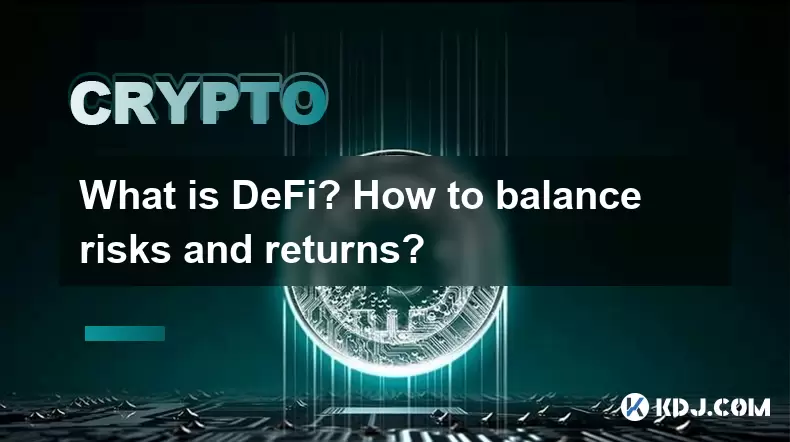
What is DeFi? How to balance risks and returns?
May 31,2025 at 12:22pm
What is DeFi? How to Balance Risks and Returns? Decentralized Finance, commonly known as DeFi, represents a revolutionary shift in the financial ecosy...
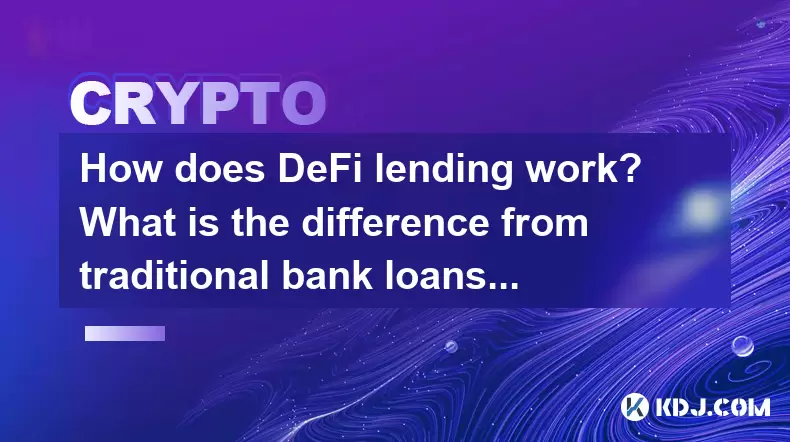
How does DeFi lending work? What is the difference from traditional bank loans?
May 29,2025 at 05:36pm
Introduction to DeFi LendingDeFi lending, or decentralized finance lending, represents a revolutionary shift in the way borrowing and lending are cond...
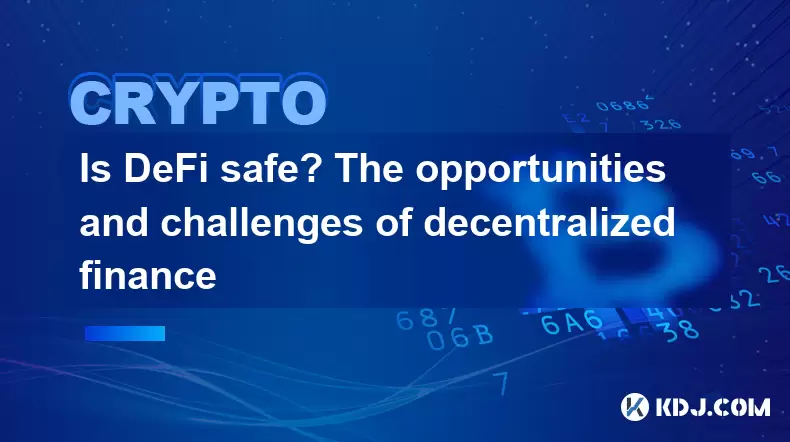
Is DeFi safe? The opportunities and challenges of decentralized finance
May 27,2025 at 02:28pm
Decentralized Finance, commonly known as DeFi, has revolutionized the financial landscape by offering a range of financial services without the need f...

DeFi Mining Tutorial: How to Maximize Profits and Reduce Risks?
May 27,2025 at 07:42am
DeFi, or Decentralized Finance, has opened up a new world of opportunities for crypto enthusiasts looking to maximize their profits through various mi...

How to track DeFi activity on a block explorer
Sep 04,2025 at 05:36pm
Bitcoin's Role in Decentralized Finance1. Bitcoin remains the cornerstone of the cryptocurrency ecosystem, serving as both a store of value and a benc...

What is the difference between DeFi and CeFi? An article analyzing the advantages and disadvantages of both
Jun 13,2025 at 03:57am
Understanding the Foundations of DeFi and CeFiTo fully grasp the difference between DeFi (Decentralized Finance) and CeFi (Centralized Finance), it’s ...

What is DeFi? How to balance risks and returns?
May 31,2025 at 12:22pm
What is DeFi? How to Balance Risks and Returns? Decentralized Finance, commonly known as DeFi, represents a revolutionary shift in the financial ecosy...

How does DeFi lending work? What is the difference from traditional bank loans?
May 29,2025 at 05:36pm
Introduction to DeFi LendingDeFi lending, or decentralized finance lending, represents a revolutionary shift in the way borrowing and lending are cond...

Is DeFi safe? The opportunities and challenges of decentralized finance
May 27,2025 at 02:28pm
Decentralized Finance, commonly known as DeFi, has revolutionized the financial landscape by offering a range of financial services without the need f...

DeFi Mining Tutorial: How to Maximize Profits and Reduce Risks?
May 27,2025 at 07:42am
DeFi, or Decentralized Finance, has opened up a new world of opportunities for crypto enthusiasts looking to maximize their profits through various mi...
See all articles





















